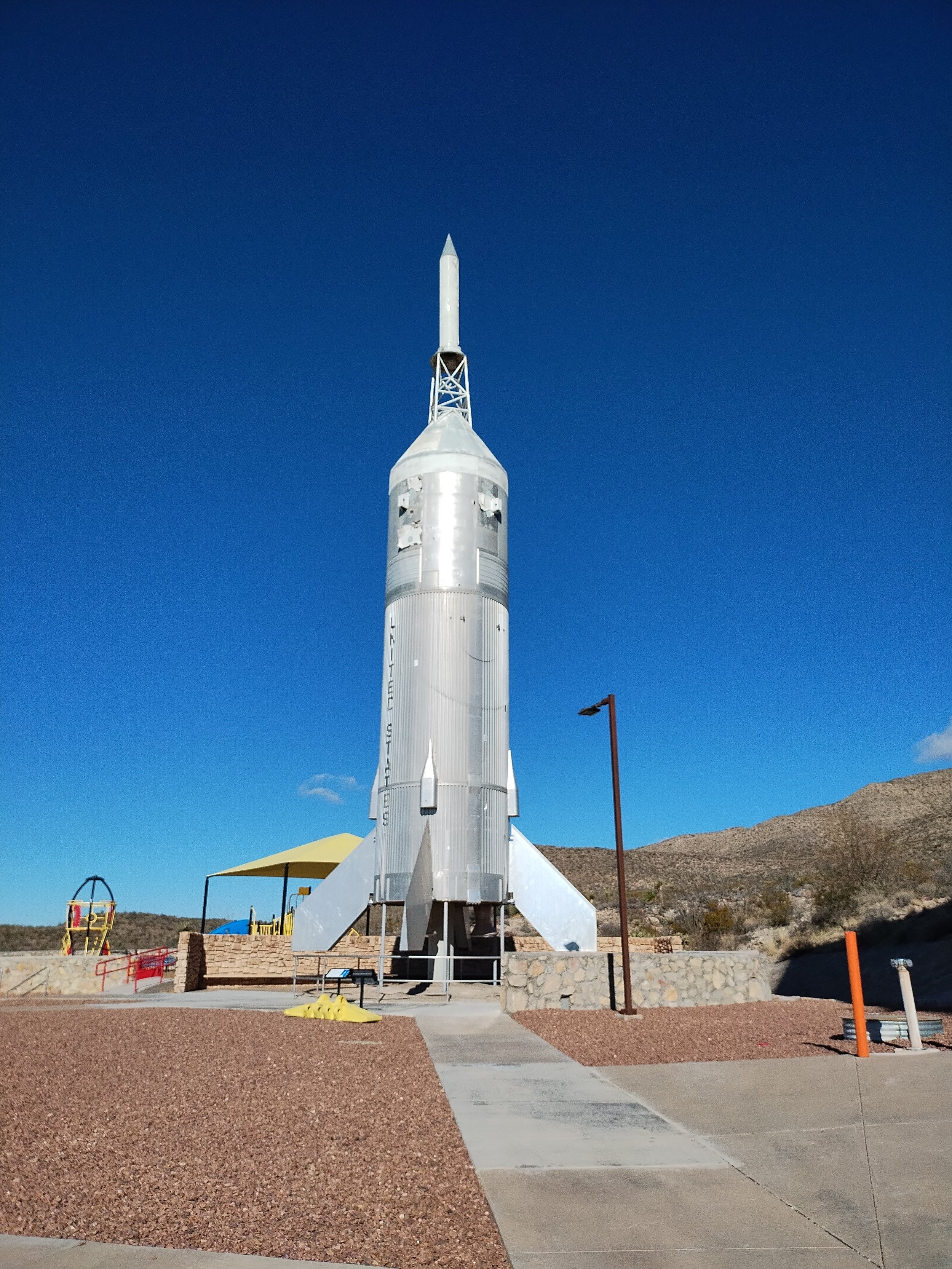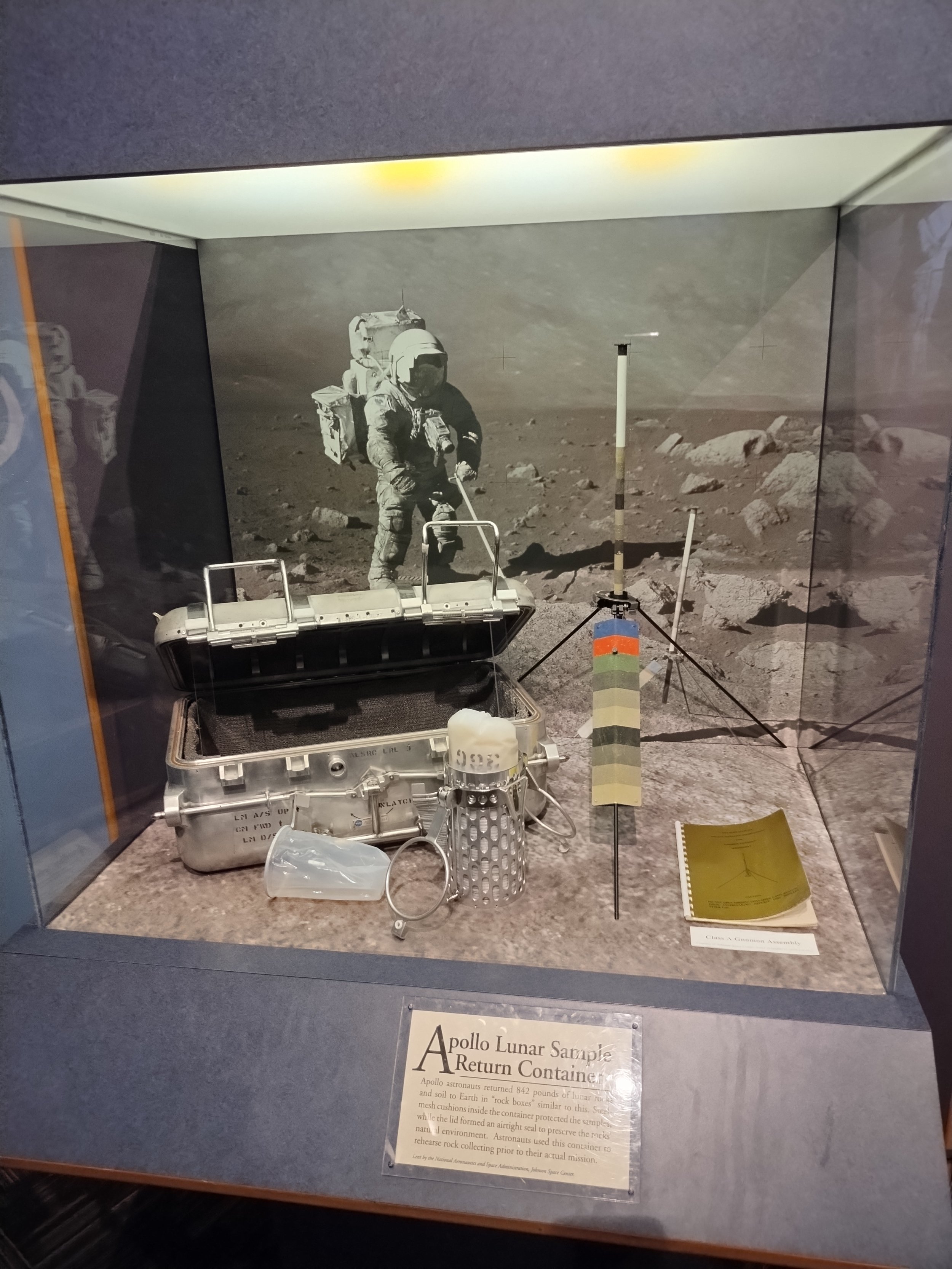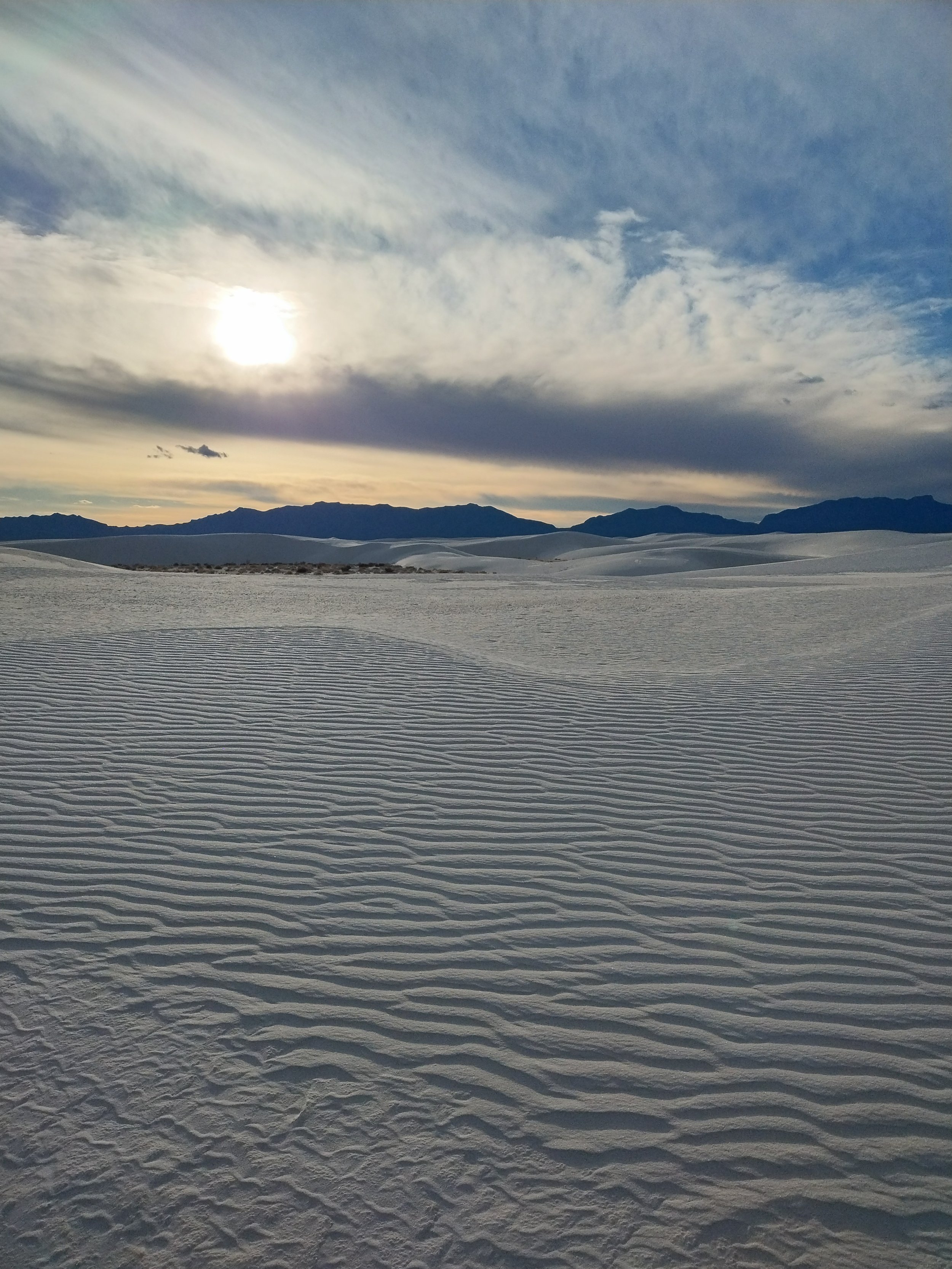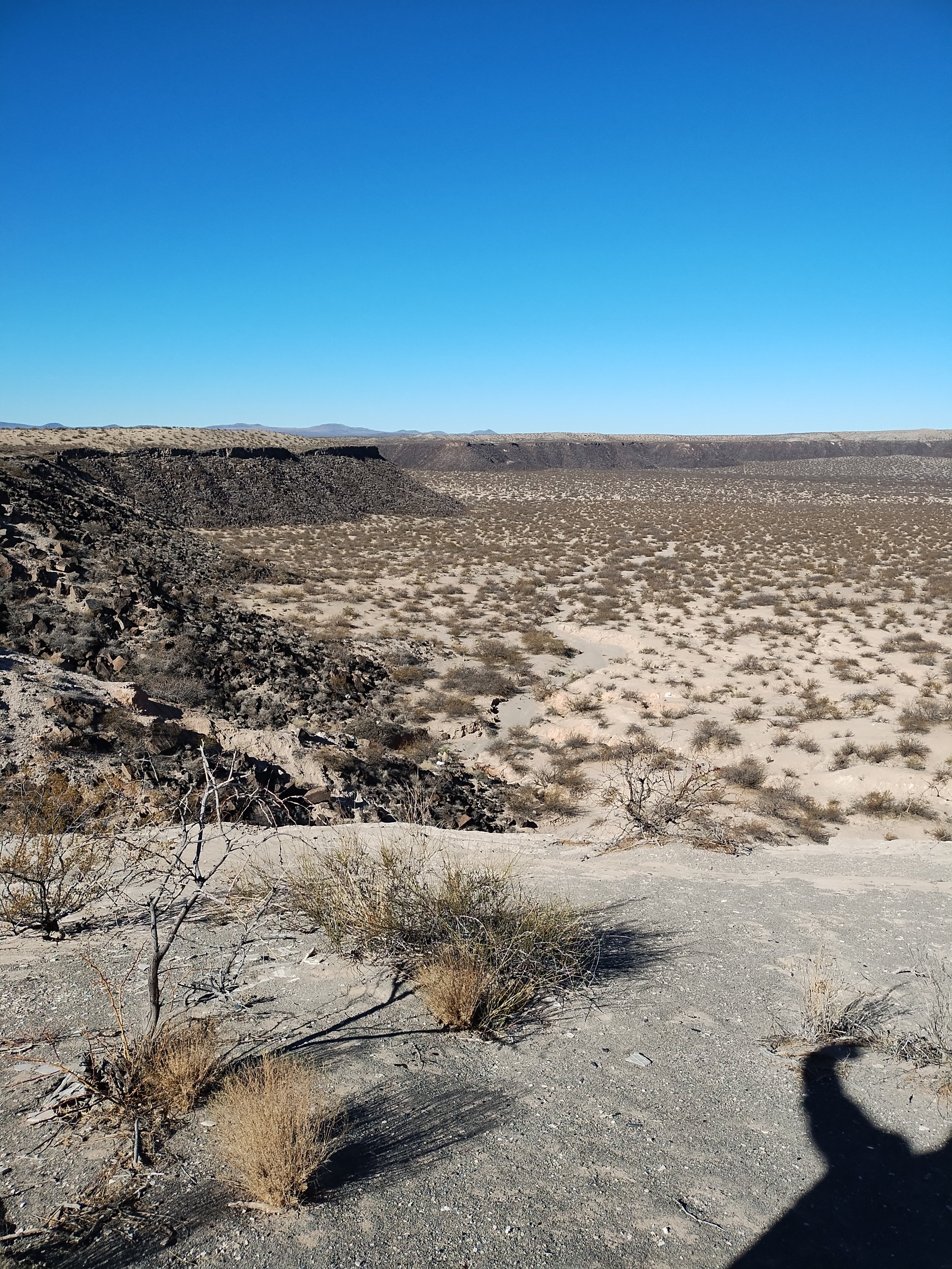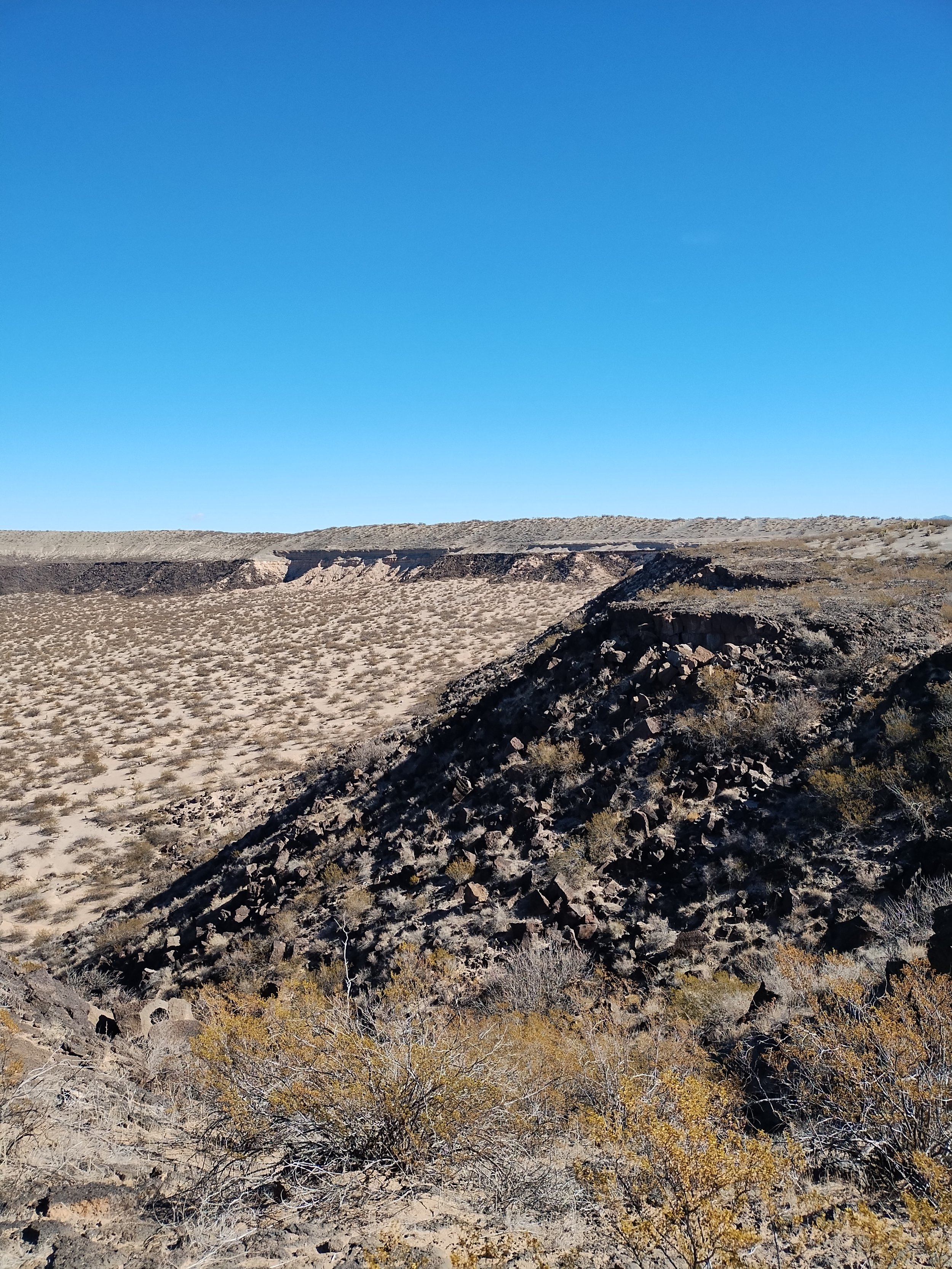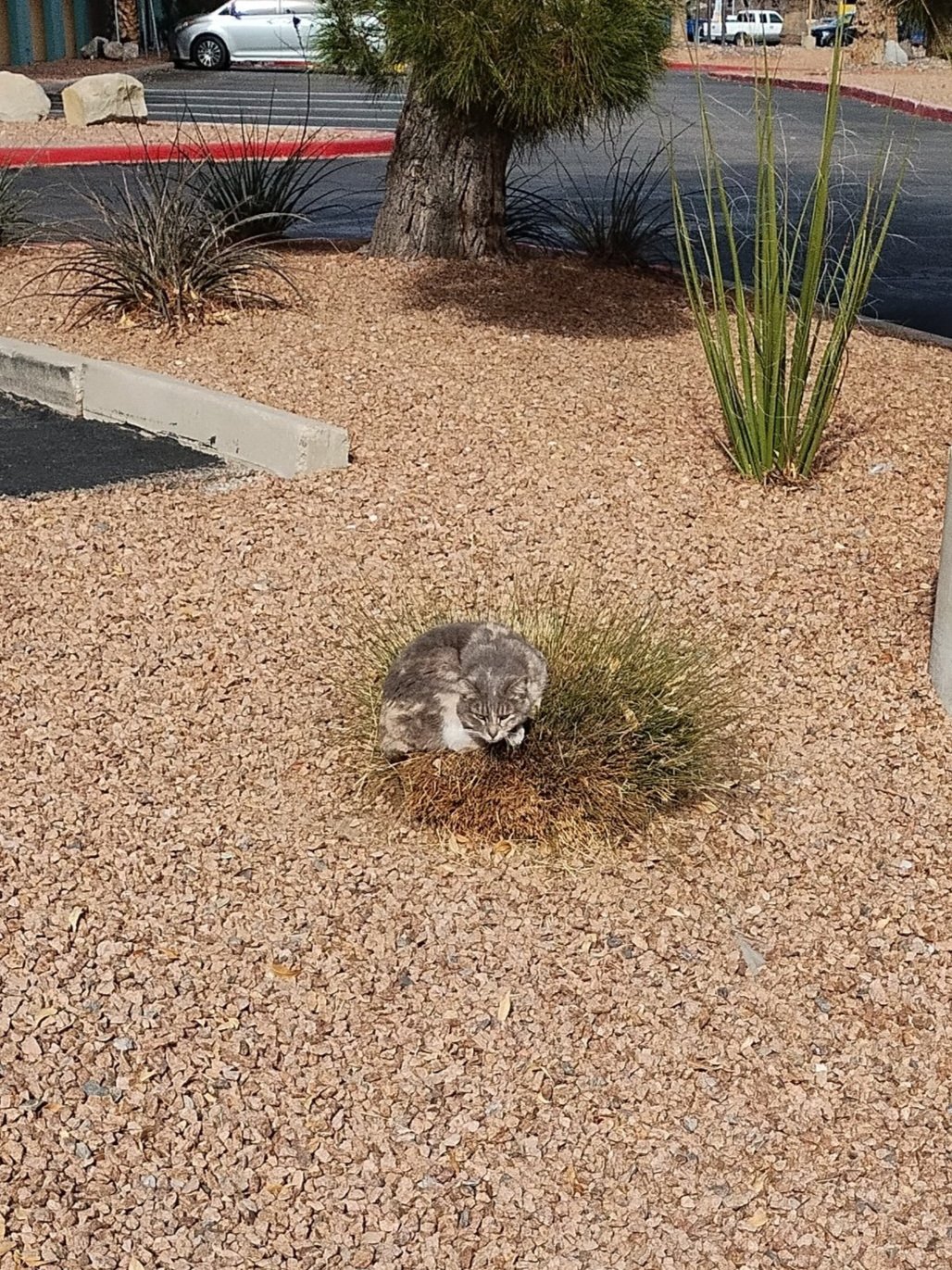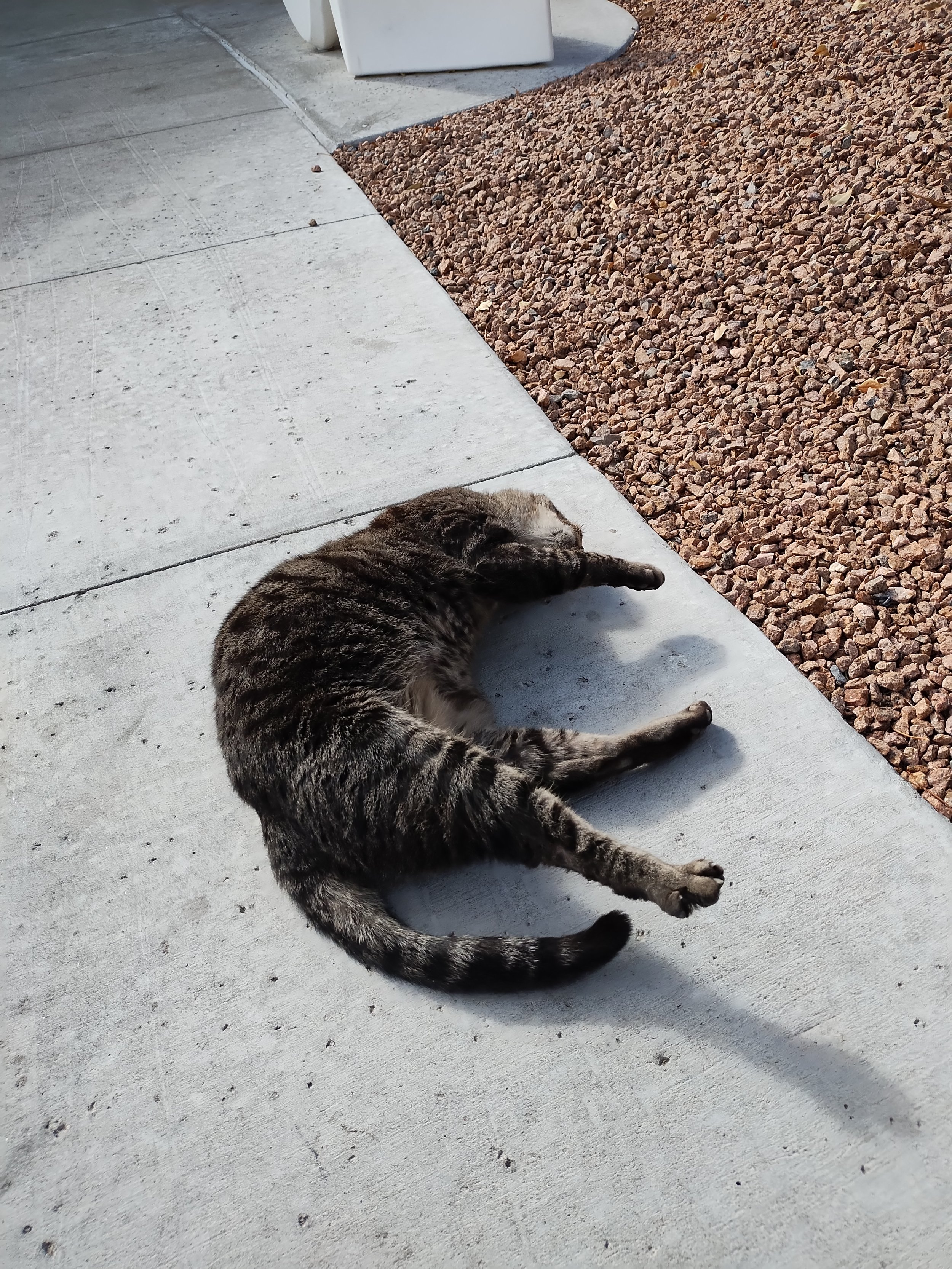I had the privilege of joining Dr. Kirby Runyon on a tour of space, right here on Earth. His astronaut geology training brought us to several geologic sites that are almost identical to what an astronaut would find on the moon, Mars, Venus, Io, Titan, and other worlds.
Together with another space enthusiast, we visited the New Mexico Museum of Space History, Carrizozo lava flow, White Sands National Park, Kilbourne Hole, and Aden Crater.
The New Mexico Museum of Space History was a great place to start. We were in the company of real rockets and astronaut equipment, and learned how astronauts trained for their missions at the sites we were about to visit.
Next was Carrizozo lava flow, which we visited through the Valley of Fires recreation area. This 40 mile expanse of lava poured from Little Black peak (not pictured), estimated around 5000 years ago. Kirby taught us to identify different formations in the basaltic rock, and we enjoyed hopping off the trail to piece together how the lava moved and hardened. Except for the vegetation, this sort of landscape is easy to find on other volcanic planets.
Our last stop of Day 1 was White Sands National Park. This dunefield of sparkling gypsum crystals is the largest of its kind on earth, and like nearby Carrizozo lava flow, can be seen from space. This was a truly surreal experience for me—coming from the flat prairie of Dallas, I spent the whole day snapping photos of anything larger than a hill. The whiteness of the sand intensified the colors of the sky in a way that my camera doesn’t capture, and the tops of the dunes glittered as the sun went down. We hiked across a few dunes for a moment of solitude, and enjoyed the eerie quiet and stillness.
The first stop of Day 2 was Kilbourne Hole, where Apollo astronauts were trained between 1969 and 1971. Kilbourne is a maar: tens of thousands of years ago, rising magma encountered groundwater in the crust, resulting in an explosion from all the vapor pressure. This blew apart the surface and ejected rocks from deeper underground. Among all the black basalt are bits of pyroxene and green olivine. I found it amazing to learn that this pale blue dot has a green heart under the surface.
Our final stop was Aden Crater. Aden Crater is a shield volcano, with rocky remains of what once were lakes of lava. This was a more substantial hike, from the dirt road up to the ridge, but in my imagination it was the most Martian experience. The dusty soil on the outskirts reminded me so much of the Red Planet, and it felt like the three of us were alone in the world on our trek from the lander. We carefully ambled up and down precarious slopes to follow lava tubes and hunt for vents. In my mind, I lived my dream of being off-planet.
Bonus pictures: if you know me, you know I love animals. The drive to Aden Crater involved going through pasture gates, and we had a funny encounter surrounded by cows. My hotel in El Paso had these two very well cared for cats living in the garden.
I sincerely thank Kirby Runyon for organizing such a wonderful experience, with the right amount of education and fun. Thank you to Jonathan Stroud for being great company, and special thanks to Ken Bowdon for connecting me to Kirby and making this trip possible.

